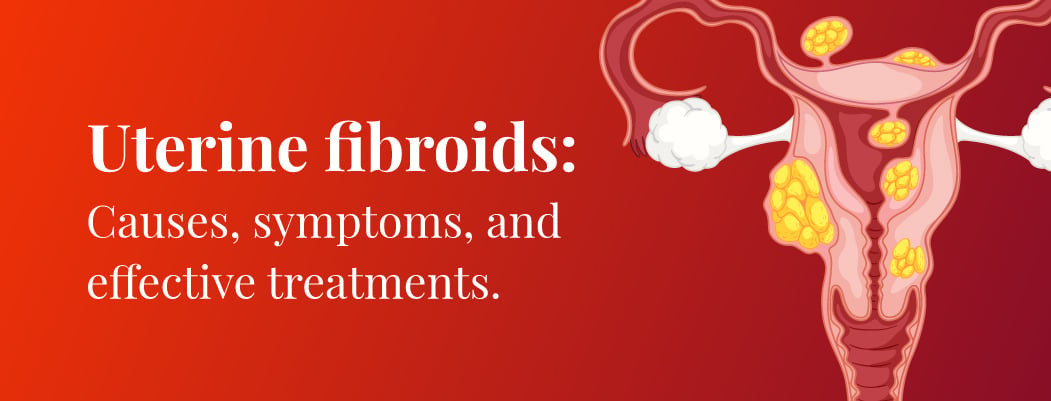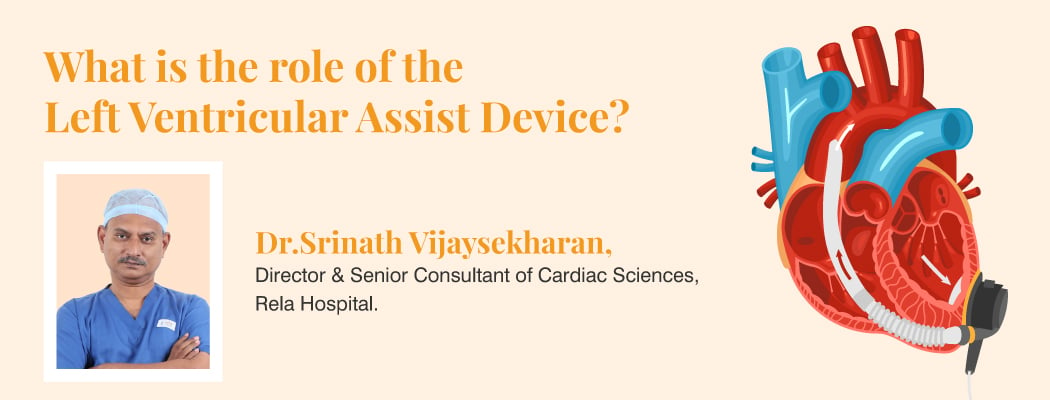What are Uterine Fibroids? Causes, Symptoms and Treatment
December 28, 2022

Uterine fibroids are abnormal muscular growths that can grow on or in the uterus. These are made up of the muscle and connective tissues from the walls of the uterus. These fibroids occur in various sizes, shapes, and locations. They can occur in the uterus, on the uterine wall, or on the surface as well. They can either be so small that the doctor cannot see them with the naked eye, or they can grow in masses so large that the size and shape of the uterus are affected. They are generally benign (noncancerous).
Table of Contents
Types of Uterine Fibroids
These fibroids can generally be of four types. They are:
- Intramural fibroids
- Subserosal fibroids
- Pedunculated fibroids
- Submucosal fibroids
- Intramural fibroids: These are most common type of fibroids. They can appear within the walls of the uterus and may grow larger stretching the womb.
- Subserosal fibroids: These can grow on the serosa, ie, the outside of the uterus. They may grow large enough to make the womb appear bigger on one side.
- Pendunculated fibroids: Sometimes, Subsersal fibroids can develop a small stalk like base to support the tumor. Fibroids with the stalk-like development are called the Pendunculated fibroids.
- Submucosal fibroids: These can develop in the Myometrium, ie, the middle muscle layer of the uterus. These are not as common as the other types.
Causes of Uterine Fibroids
There is no proven definite cause for these, but there are several factors that may influence their formation. They are:
Hormones The hormones made by the ovaries are oestrogen and progesterone. Every menstrual cycle, they cause the uterine lining to renew and may promote the development of fibroids.
Family background Fibroids might run in families. You could have this ailment if your mother, sister, or grandmother have a history of having it.
Pregnancy Your body produces more progesterone and oestrogen during pregnancy. While you are pregnant, fibroids may form and expand quickly.
Uterine Fibroids Risk Factors
Your risk of getting uterine fibroids may be increased by a few factors, such as:
- Age
- Race
- Early onset of menstruation
- Usage of birth control
- Lack of vitamin D
- Eating too much red meat and insufficient amounts of dairy, fruits, or green veggies
- Alcohol
- Family background
- If your mother or sister have had fibroids, you are more likely to develop them.
Symptoms of Uterine Fibroids
Depending on how many tumours you have, where they are located, and how big they are, your symptoms will vary.
You might not experience any symptoms if your tumour is very small or if you are going through menopause. Both during and after menopause, fibroids may decrease. This is due to a decrease in oestrogen and progesterone levels, two hormones that encourage the formation of fibroid, in menopausal women.
Fibroid symptoms may include:
- Pain in the pelvis or lower back
- Excessive bleeding before or during periods that involves blood clots
- Increased menstrual discomfort
- Increased urination
- Prolonged menstruation
- Pressure or feeling of fullness in your lower abdomen
- Abdominal swelling or enlargement
How are fibroid tumors diagnosed?
You’ll need to see a gynecologist for a pelvic exam in order to receive an accurate diagnosis. This examination is done to determine the health, dimensions, and shape of your uterus. You might additionally require the following tests:
- Ultrasound: An ultrasound creates images of your uterus on a screen using high-frequency sound waves. Your doctor will be able to see the inside structures and any fibroids by doing this. Since the ultrasound wand is placed inside the vagina during a transvaginal ultrasound, it is closer to the uterus and may produce crisper images. abdominal swelling or enlargement
- Lab test: To assist determine the cause of your fibroids, your doctor could recommend that you undergo blood testing. They can determine whether you have anemia (low numbers of red blood cells) or other bleeding diseases based on your complete blood count (CBC).
- Magnetic resonance imaging (MRI): You might also undergo an MRI if, following an ultrasound, your doctor feels that more information is necessary. MRIs provide more precise images of fibroids and can aid doctors in selecting the most effective course of action. If you have a large uterus or are nearly at menopause, your doctor might also recommend getting an MRI.
- Hysterosonography: A technician widens your uterine cavity with saline during this examination. This enables them to see uterine lining and submucosal fibroids that are enlarging into your uterus. When trying to conceive or if you experience heavy periods, this is helpful.
- Hysterosalpingography: You might undergo a hysterosalpingography if your physician needs to determine whether your fallopian tubes are blocked. In order to better see your uterus and fallopian tubes on an X-ray, your doctor will apply dye to highlight them.
- Hysteroscopy: A little telescope with a light attached is inserted into your cervix by the doctor. They can next examine the walls of your uterus and the entrance of your fallopian tube after injecting saline and widening your uterine cavity.
Also Read: What Is Pelvic Inflammatory Disease
Treatment for Uterine Fibroids
Treatment options for fibroids are numerous. Your age, where your fibroids, whether you wish to become pregnant, whether you are experiencing symptoms, and the best course of treatment for you will all be determined by these factors.
Watchful waiting: Your doctor could advise you to wait it out if you just have minor symptoms or none at all. Fibroids can grow slowly or not at all, and they are not malignant. After menopause, they could also get smaller or disappear.
Natural therapies and at-home remedies
The following natural cures and at-home remedies can be effective for fibroids:
- Acupuncture
- Yoga
- Massage
- Dietary adjustments can also be helpful.
Gui Zhi Fu Ling Tang (GFLT), a traditional Chinese medicine recipe, applies heat for cramps (avoid heat if you encounter severe bleeding). Avoid meats and foods with a lot of calories. Select instead green vegetables, green tea, and cold-water fish like tuna or salmon, which are rich in flavonoids.
Women with fibroids may also find it helpful to control their stress levels and lose weight if they are overweight.
Who should you consult in the case of uterine fibroids?
Gynecologists and obstetricians can treat uterine fibroids.
People also ask
How serious are uterine fibroids?
Even though uterine fibroids are typically not harmful, they can be uncomfortable and can sometimes result in complications, such as a decline in red blood cells (anemia), which results in exhaustion due to significant blood loss.
What are the symptoms of fibroid in the uterus?
- heavy bleeding during the period.
- a week or longer between menstrual cycles.
- pelvic pressure or discomfort.
- frequent urination
- bladder emptying challenges.
- Constipation.
- Leg or back discomfort.
What happens if fibroids go untreated?
Fibroids in the uterus have a tendency to multiply and increase in size if left untreated. The bleeding will intensify and become more painful; it may also be accompanied by anemia and severe cramping. The abdomen may enlarge as the fibroids expand.








